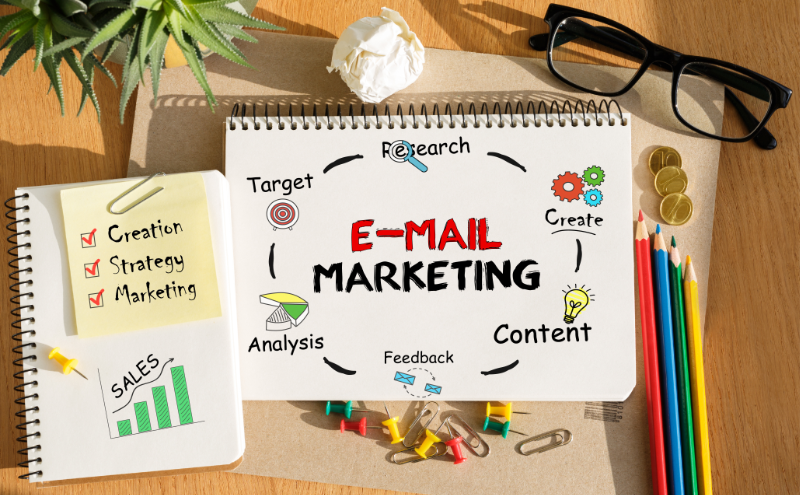How to Reduce Your Ecommerce Email Bounce Rate: Tips and Best Practices

I am an experienced online entrepreneur with 19 years of experience. I have learned the hard way that not knowing a crucial fact in the industry can have serious consequences. Unfortunately, my lack of knowledge resulted in a significant loss of domain authority. But I consider myself lucky to have gained this valuable knowledge, and I would like to share it with you below.
Email bounce rates can be a frustrating problem for ecommerce businesses. When your emails bounce, it means that they are not reaching your subscribers' inboxes, which can lead to lost sales and lower engagement rates. In this article, we'll explore some tips and best practices for reducing your ecommerce email bounce rate and improving the effectiveness of your email marketing campaigns.
1. Clean Up Your Email List
One of the most effective ways to reduce your ecommerce email bounce rate is to clean up your email list regularly. This means removing any inactive or invalid email addresses from your list to ensure that your emails are only going to people who are interested and engaged in your brand. You can use email verification tools to check the validity of your subscribers' email addresses and remove any that are bouncing or invalid.
2. Use Double Opt-In
Another effective way to reduce your ecommerce email bounce rate is to use double opt-in. This means subscribers must confirm their subscription to your email list by clicking a link in a confirmation email. This helps to ensure that only engaged subscribers are added to your list and reduces the likelihood of email bounces.
3. Segment Your Email List
Segmenting your email list can also help to reduce your ecommerce email bounce rate. By segmenting your list based on factors such as subscriber engagement, location, or purchase history, you can ensure that your emails only go to the most relevant subscribers, leading to higher engagement rates and lower bounce rates.
4. Avoid Using Spam Triggers
Using spam triggers such as excessive use of capital letters or too many exclamation points in your email subject lines can increase the likelihood of your emails being flagged as spam. This can lead to higher bounce rates and lower deliverability rates. Instead, focus on creating subject lines that are clear, concise, and relevant to your subscribers' interests.
5. Monitor Your Email Deliverability
Monitoring your email deliverability can help you identify and address any issues causing your emails to bounce. Use email deliverability tools to track your email deliverability rates and identify any issues that need to be addressed, such as high complaint rates or low sender reputation scores.
Reducing your ecommerce email bounce rate requires ongoing attention and effort, but the benefits of a clean and engaged email list can be significant. By following these tips and best practices, you can reduce your ecommerce email bounce rate and improve the effectiveness of your email marketing campaigns.
6. Use a Reliable Email Service Provider
Using a reliable email service provider (ESP) can also help to reduce your ecommerce email bounce rate. A good ESP will have strong deliverability rates and can help you address any issues that may be causing your emails to bounce. Look for an ESP that offers email verification tools, segmentation options, and other features that can help you to manage your email list and reduce your bounce rate.
7. Maintain Consistency in Your Email Campaigns
Consistency is key when it comes to email marketing. This means sending regular, consistent email campaigns to your subscribers. Doing so can establish a sense of familiarity and trust with your subscribers, leading to higher engagement and lower bounce rates. Sticking to a regular email schedule and maintaining a consistent tone and style across your emails.
8. Keep Your Email List Engaged
Engaged subscribers are less likely to bounce, so keeping your email list engaged and interested in your brand is important. This means creating compelling, relevant, and valuable email content for your subscribers. You can also use segmentation, personalization, and dynamic content to make your emails more engaging and relevant to your subscribers' interests.
9. Test and Optimize Your Emails
Testing and optimizing your email campaigns can help you identify and address any issues causing your emails to bounce. Use A/B testing to test different email subject lines, content, and calls to action, and track your results to identify what works best for your audience. Use this information to optimize future email campaigns and reduce bounce rates.
10. Monitor Your Email Metrics
Finally, monitoring your email metrics to track your progress and identify any issues causing your emails to bounce is important. Keep an eye on your email open rates, click-through rates, and bounce rates, and use this information to adjust your email strategy as needed. Regularly monitoring your email metrics lets you stay on top of any issues and ensure your emails reach your subscribers' inboxes.
Reducing your ecommerce email bounce rate is an ongoing process that requires attention and effort. By following these tips and best practices, you can reduce your bounce rate and improve the effectiveness of your email marketing campaigns.
Subscribe to Emercify to get weekly e-commerce tips, strategies, and tactics.





